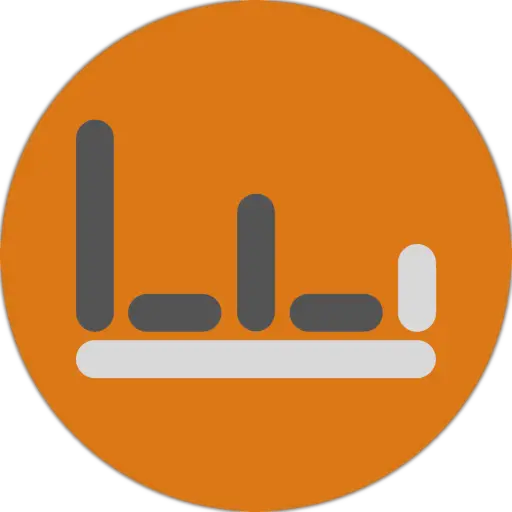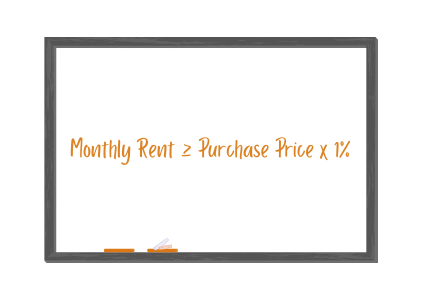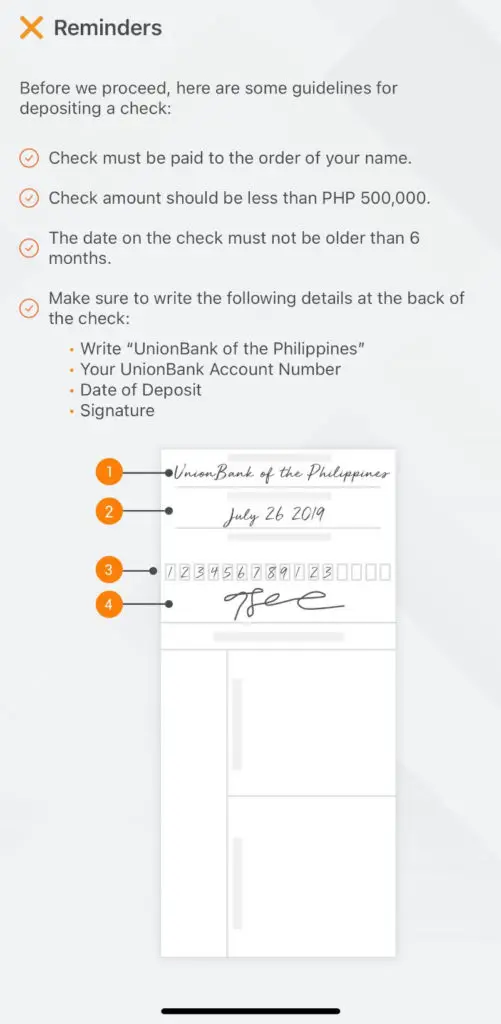Out of a hundred properties, you get one. That’s typically the ratio between all the properties eyeballed and the property you actually buy. It is time-consuming. We certainly need a filter to weed the bad ones out quickly. This is where the 1% Rule (one percent rule of thumb) for rental properties in real estate investing comes in. But can we use the 1% rule of thumb in the Philippines?
Owing to its implications and ease of application, it is a metric that every investor should at least know. The 1% Rule says that a rental property should generate monthly rent that’s at least 1% of its purchase price.
Is it a relevant rule of thumb in the Philippines, or is a lower or higher threshold warranted? A lower 0.8% threshold has worked for me, but should you use it? What does it mean if a property barely misses the 1% mark? Can flippers (i.e., not buy-and-hold investors) use this rule of thumb?
We’ll talk about all these and more.
Page Contents
What is the 1% Rule in real estate investing?
The 1% Rule assigns a passing score to real estate properties that rent out for at least 1% of their purchase price. If it gets a passing score, then it’s included on your shortlist.
(Real estate investors dedicate more time and analyses to shortlisted properties.)
Real estate investing is a numbers game — the more properties you check, the greater the chances of finding a property that cash flows well. But diving deep into hundreds of properties is inefficient, especially if there’s a quick way to filter out the bad ones.
The 1% Rule is a quick check to see if a property is worth further analysis.
How to calculate the 1% rule in real estate
If a property is selling at Php1 million, then the monthly rent, at least according to this rule of thumb, should be at least Php10,000 a month.
The 1% Rule says buy the property if the expected monthly rent is greater than, or equal to, one percent of the purchase price.

A higher rent is, more often than not, indicative of a good deal. Alternatively, know your property’s yield by:
Yield = Monthly Rent ÷ Purchase Price
A property passes the 1% Rule if it yields at least 1%.
What the 1% Rule is not
The 1% Rule is not the determining factor for buying, or not buying, a property because of the multitude of factors not considered by the rule of thumb.
Let’s take an example. Suppose a property passes the 1% score due to its low price. But the price is actually fair considering, say, the illegal settlers in the area. Should you buy the property? That is a call you’ll have to make. But it highlights how not every property that passes the 1% Rule is an instant buy.
Or how about a property that yields 0.8%, barely missing the 1% Rule? If, say, it’s renting out lower than comparable rental properties in the area (meaning you could rent it out at a higher price), then it’s probably worth considering the property. So it also shows how not every property that fails to pass the 1% Rule is an instant reject.
What are the implications of the 1% Rule?
The 1% Rule has two implications. A rental property shows signs of a good deal if:
- The monthly rent is higher
- The purchase price is lower
All things the same, a higher rent is obviously preferred. But it’s worth noting that this assumes a comparison of comparable properties. (More on the advantages and disadvantages of the 1% Rule below.)
The second implication underscores how purchase price affects the marketability of the property. For the same property with absolutely no changes in location, design, amenities, and so on, negotiating a lower price brings the property closer to the 1% Rule. It is then a quick baseline price you can use in your negotiations.
(Related: How to Value an Apartment Building: Expert Tips by a Pro for Beginners)
Flipping properties
Although the 1% Rule centers on rental properties and rental rates, it is a rule of thumb that even flippers can take advantage of.
A flipper describes a real estate investor who buys properties with the intent of quickly selling for a profit. They are in contrast to buy-and-hold real estate investors. But the 1% Rule is a filter for spotting good deals, and flippers can definitely take advantage of this.
Let’s go back to our hypothetical Php1 million property. If the property rents out for Php12,000 per month (meaning it yields 1.2%, above our 1% Rule), then this is an opportunity for the flipper to sell (i.e., flip) the property at a minimum of Php1.2 million. For a buy-and-hold investor, the flipper’s offer at Php1.2 million is likely a good rental property that passes the 1% Rule — Php12,000 / Php1.2 million = 1%. It’s a win for both.
Factors to consider after the 1% Rule
We’ve briefly mentioned how the 1% Rule is a signal that may or may not indicate a good deal. It is a first step that should definitely be followed by more advanced metrics and due diligence.
Some considerations to think about include, but are not limited, to the following:
- Is it the property’s fair price and rent? How negotiable is the price?
- What’s the expected growth in the area? Do you expect rent to increase, decrease, or remain the same in the future?
- What’s the yield of comparable properties? Is the 1% Rule the norm, or should you adjust your threshold for the area?
To verify the fairness of rental rates, checking the property’s occupancy rate helps. For example, if it’s a yield that’s way above 1% but the occupancy rate is poor, then the rent might be overstated and a downward adjustment is justified.
Again, there are certainly more factors to consider after shortlisting with the 1% Rule.
The 1% Rule vs. other metrics
Unfortunately, the 1% Rule is somewhat arbitrary and is slightly difficult to interpret for new investors. What it’s really saying is that a property with a 12% (or more) year one return on investment (ROI) is a good deal. Here’s why.
At Php10,000 per month, the property earns a total of Php120,000 in year one. Using our Php1 million purchase price, that is a year one ROI of Php120,000 / Php1 million or 12%. It can be confusing for beginners to wrap their heads around the distinctions between our 1% and 12% yields.
In many respects, the 1% Rule is a performance metric that’s lacking. That said, the 1% Rule is extremely easy to calculate. It’s a helpful gauge you can use when negotiating a deal.
The 1% Rule for real estate investing in the Philippines
Is the 1% Rule realistic? Is the 1% Rule relevant in the Philippines?
What follows is purely anecdotal. This is what we’ve observed in the hundreds of properties we’ve considered and reviewed over the last few years. It is, by no means, the absolute rule for real estate investing in the Philippines. I do hope it creates a discussion where everyone can learn more.
I have not found a property that passes the 1% Rule in the Philippines. For your reference, places I’ve checked include Metro Manila, Laguna, Marikina, and El Nido, and Puerto Princesa. We’ve also found how existing rental properties normally fail to pass the 1% Rule. Whether or not that’s due to overpriced properties or depressed rental rates in the city is anyone’s guess.
(Related: Is a Condo a Good Investment? Rarely… Here’s Why)
We’ve since lowered our shortlisting threshold to 0.8%. 1% seems too restrictive and there’s definitely a chance of losing out on a good deal. Sure, a lower threshold weeds out fewer properties. But if it means dedicating a few more hours to finding the best possible property, then it’ll be worth it. And that is my biggest takeaway from the 1% Rule. It’s a rule of thumb that’s open to adaptation.
Conclusion: 1% Rule in the Philippines
The 1% Rule can be used by real estate investors in the Philippines. But as a rule of thumb, there’s definitely some leeway we can assume. Personally, the 0.8% threshold works for us. It’s a rule of thumb, and further investigation is always prudent anyway.
Having a lower threshold does mean fewer properties are filtered out. But it also means not rejecting an otherwise cash-flowing property.
In the end, it’s about testing what your market dictates.
I don’t think the 1% Rule was meant to be taken literally. Let’s embrace it with changes appropriate to wherever you’re buying properties. The biggest takeaway is there’s a quick check you can use to filter properties. Whether that’s 1% or not matters less.








